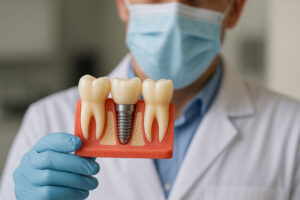September is National Gum Care Month, a time to learn a little bit about a common disease that affects millions of individuals in this country, gum disease. There are three main stages of this disease, gingivitis, periodontitis and advanced periodontitis. In order to get the most effective treatment for your oral health, it is best to understand what each stage means for your teeth and gums.
Gingivitis
This stage is the mildest form of gum disease. Sometimes, the inflammation is so minute at this point that the person will be asymptomatic. If there are symptoms, they are likely to include bleeding, swollen or red gums. Some factors that can contribute to its development are hormone fluctuations, diabetes and chronic stress. The good news is that the effects of gingivitis are reversible in its early stages, and treatment is fairly simple.
Periodontitis
If gingivitis is not treated, then it can rapidly escalate into periodontitis. This is when bacteria have begun developing below the gum line, damage can occur to the jaw bone, and the gum tissue can quickly be destroyed. Teeth can even start to fall out at this stage. Two different stages of periodontitis exist:
- Periodontitis: Irreversible damage to the jawbone and supporting fibers has begun during the periodontitis stage. Bacteria and plaque become trapped in deep pockets that form between the teeth and gums, which can cause halitosis (bad breath) and receding gums.
- Advanced Periodontitis: During the final stage, the teeth may begin loosening, causing tooth loss or shifting of the teeth. The bacteria and plaque that have been allowed to harbor are causing additional damage to the supporting structures.






